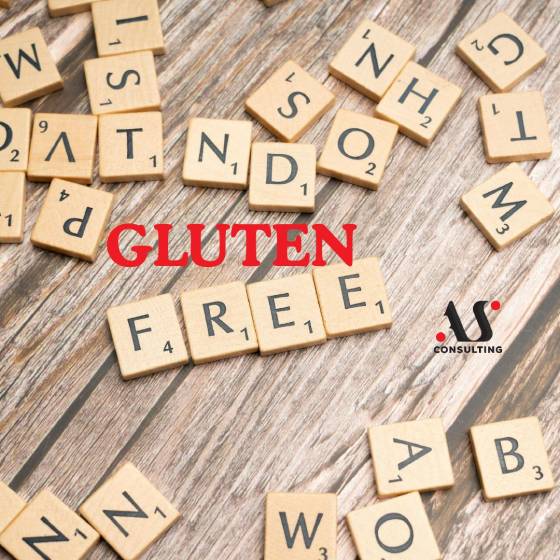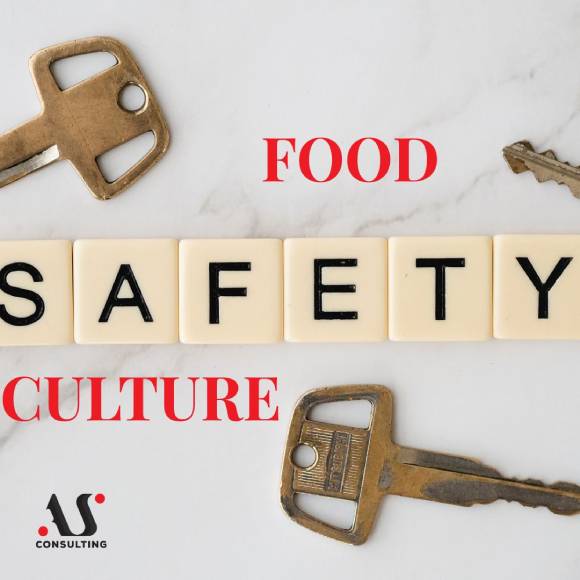
Food Safety Culture
August 20, 2020
IFS FOOD STANDARD – WHAT VERSION 7 BRINGS
August 26, 2020Food is our basic life need, so the issue of its quality and safety is essential for all of us. As economic factors dictate all areas of life, so, unfortunately they dictate the possibility for quality and safe food. In economically underdeveloped societies, unfortunately, in the 21st century the question of food availability is raised, while in economically developed societies the question of food availability, quality and safety is no longer raised - this is something that goes without saying, while the focus of consumer interest expands on ethical issues and socially responsible behaviour of companies.
What is quality for a user? The concept of quality is understood differently by different consumers, so something that is good for one person is not for another. If we start from the fact that the user strives to achieve greater value, ie to get the highest quality product at a lower price, it takes us to the conclusion that the degree of customer satisfaction is related to the product price. Unfortunately, the fact is that it is not always possible to make a quality product at a low price. Quality is something that costs money. However, as purchasing power declines more and more, the efforts of producers to meet the needs of customers are growing, so space is opening up for illegal actions - ie.
counterfeiting.
WHAT IS FOOD FRAUD?? There is no single definition, but according to the US FDA (Food and Drug Administration): "food fraud - counterfeiting, intentional replacement or addition of a substance to a product in order to increase the apparent value of the product or reduce the cost of its production for economic gain." It is crucial to understand that the motive for food counterfeiting is to
gain economic benefit.
HISTORY OF FOOD FRAUD. Food fraud is not new, it is something that is happening and has happened throughout history. During the Roman Empire, frauds related to wine were recorded, where wine was mixed with grape juice, but lead-based compounds were also added to make the wine sweeter and longer lasting. In the Middle Ages, spices traveled great distances, often by land, to the European market. The spices were therefore very expensive, sought after and unknown to European consumers. Enterprising fraudsters made economic gains by mixing large quantities of dried local herbs, with expensive imported herbs such as black pepper, nutmeg, or completely misrepresenting locals for foreign spices, especially by offering these counterfeit spices at lower prices. The bravest used walnut shells or even dust to increase the weight of their products. Unfortunately, the practice went further and further, so in the period of the industrial revolution, it spread to relatively cheap and available foods, such as flour, which was mixed with chalk or gypsum powder. The problem arises when the desire to gain economic benefits is so great that fraudsters do not shy away from ingredients that lead to danger to human health, and even death. Thus, the occurrence of melamine in baby food (China, 2008), the appearance of aniline in oil sold as olive oil (Spain, 1981), the appearance of aniline in pet food (USA, 2007), the appearance of Salmonella in peanuts (USA, 2009), etc.
Regarding this topic, history has not taught us much, on the contrary, the number of food fraud incidents is increasing from year to year, so that 60% more incidents were identified between 2011-2012 than in the period 1980-2010.
TYPES OF FOOD FRAUD. According to the GFSI focus (GFSI - Global Food Safety Initiative), there are the following types of food counterfeiting:

Slika 1. Vrste Food fraud-a, GFSI fokus
1. REPLACEMENT: Complete or partial: replacement of a higher quality (more expensive) ingredient with a lower quality (cheaper) (or alternative types - in the case of meat and fish).
2. INADEQUATE DECLARATION: several types of this type of falsification; most often it refers to the inadequate representation of the production process, the country of origin or the amount of basic ingredients.
3. CONCEALMENT: The process of concealing the low quality of ingredients or the finished product (injection of hormones to poultry to conceal disease)
4. GRAY ZONE (theft, diversion): sale of surplus undeclared product / product assigned to eg. US market and sold in Korea
5. NOT APPROVED IMPROVEMENTS: The process of adding unapproved or undeclared additives to products to improve their quality (use of melamine to increase protein value)
6. COUNTERFEITING:The process of copying a brand, packaging, recipes, processing methods, etc. (copying popular chocolate bars).
7. DILUTION: The process of mixing a liquid ingredient with liquids of a lower value (strawberry juice with water or apple juice).
.
FRAUD SUSCEPTIBLE FOOD. As mentioned, although food fraud is associated with gaining economic benefits, even relatively cheap and affordable food is subject to counterfeiting. However, throughout history, and even today, there are 10 types of food and drinks that are most susceptible to fraud.
1. OLIVE OIL - It is common to replace higher quality olive oil with lower quality (extra virgin-ordinary olive oil) or a false geographical indication - oil from Turkey - oil from Italy.
2. FISH AND SEAFOOD. Some higher value fish and seafood are being replaced by cheaper, more readily available species.
3. MILK AND DAIRY PRODUCTS. The milk is diluted with water or the milk of cattle is mixed with the milk of sheep, goat buffalo. Substances are added to the milk to seemingly increase the protein content (melamine, palm oil), to foam (detergents), to increase the density of diluted milk (ammonium sulfate).
4. HONEY. Sugar syrup, corn syrup, fructose, glucose, corn syrup, and beet sugar are added to the honey without declaring.
5. WINE. Forms of this type of deception are: diluting with water, adding alcohol or other substances, mixing or replacing with wine of lower quality, adding sweeteners.
6. FRUIT JUICE. Juices can be diluted with water or cheaper juice (e.g. expensive strawberry juice is diluted with cheaper apple juice). Some juices can actually be just water, color and aroma even though the declaration states the fruit as an ingredient.
7. COFFEE AND TEA. Ground coffee can be mixed with leaves, twigs, roasted corn, ground roasted barley and roasted ground parchments. Tea may contain leaves of other plants, color additives and color dust.
8. SPICES. The addition of glycerin, sandalwood, tartazine (artificial yellow color), barium sulfate and borax was discovered in saffron, the most expensive spice in the world. It has been proven that starch, papaya seeds, buckwheat, flour, twigs and millet are added to ground black pepper.
.
9. ORGANIC FOOD AND PRODUCTS. Conventionally produced products are presented as organic using fake certificates, fake labels and declarations.
10. COCOA AND CHOCOLATE. This group of products has always tried (and is still trying) to replace the most expensive ingredient - cocoa mass - with another, cheaper ingredient. The scams also refer to the addition of fats of different origins to improve the taste. In some cases, a cocoa-like material was found that was added to increase weight. False declarations of ingredients and / or geographical origin are common.
HOW TO MONITOR THE FORMATION OF COUNTERFEITING? Official institutions have joined in to help companies and individuals in the fight against food counterfeiting, so Interpol and Europol are dealing with these issues today through joint annual OPSON actions, as well as the European Commission and member states.
EU Food fraud Network - Since 2013, the EU Food fraud network allows Member States (as well as other European countries) to exchange information and cooperate on a voluntary basis on issues related to breaches of legislation in the EU agricultural and food chain. The EU Food fraud network connects the bodies designated by each Member State, some other European countries (Switzerland, Norway, Iceland), representatives of the European Commission services and representatives of Europol.
RASFF - Food and Feed Safety Alerts - Rapid Alert System – a system that ensures that the EU has one of the highest food safety standards in the world; a key tool for ensuring the flow of information to enable a rapid response while enabling the efficient exchange of information among its members, both on food fraud incidents and on the occurrence of unsafe food and beverages and / or withdrawals / recalls from the market. RASFF has an online database, available since 2014, through which all necessary information on suspicious food and / or manufacturer / distributor can be obtained.
FOOD FRAUD STANDARD SAFETY MANAGEMENT SYSTEM STANDARD REQUIREMENTS.
GFSI recognized certification schemes, such as IFS, BRC, FSSC22000, etc. following the GFSI Guideline, they have the same requirements regarding the protection of the company from counterfeit products. It is:
1. Food fraud vulnerability assessment:The standard will require the organization to have a documented vulnerability assessment to identify potential vulnerabilities and prioritize food fraud mitigation measures.
2. Food fraud mitigation plan:: The standard will require the organization to have a documented plan that sets out the measures the organization has taken to mitigate public health risks from the identified food fraud risks.
.
In order to properly perform the analysis and set the Mitigation Plan, it is necessary to know the risk factors related to raw materials and packaging materials (economic factors, ease of fraud, complexity of the supply chain) and then suppliers (business history, commercial relations, technical relations), and risk assessment criteria.
A ready-made risk analysis, as well as a mitigation plan on example, can be obtained from our agency. It is necessary to send a request by e-mail.




